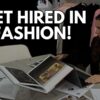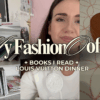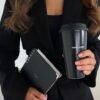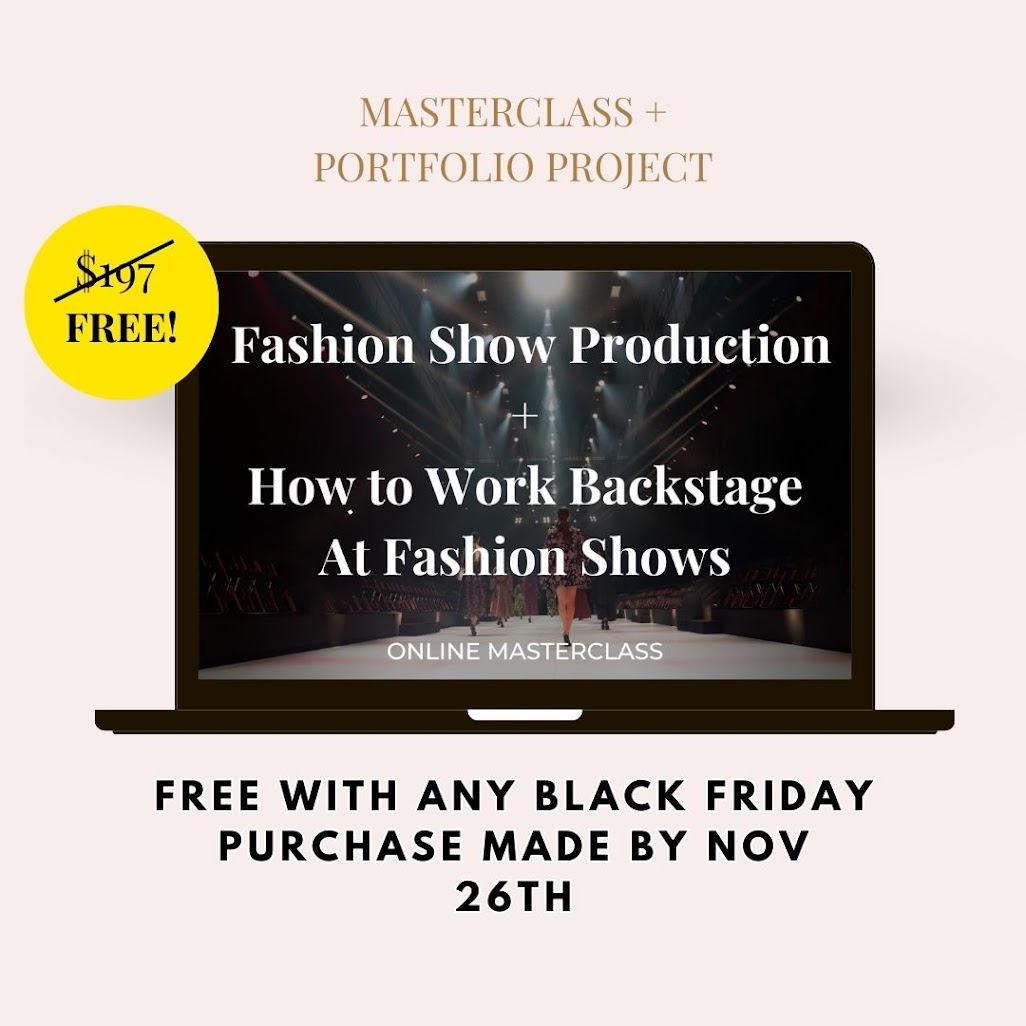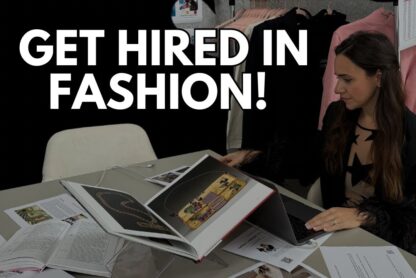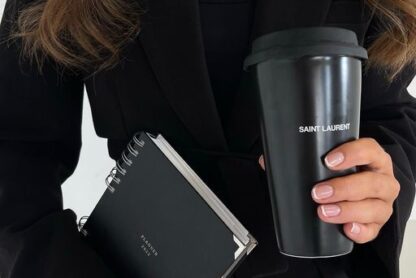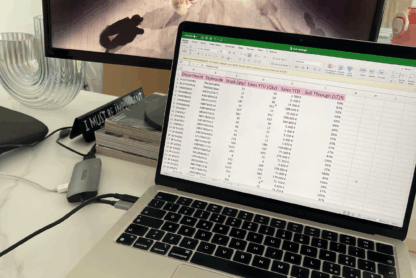As a fashion career coach, I have always strived to demystify myths and obstacles to breaking into the fashion industry, one of the most popular being “I can’t land a job in fashion without experience”. Instead, I like giving my students all the necessary tools to achieve their goals no matter their background.
Although you don’t need the experience to start your career in fashion, it doesn’t mean you should send a tedious application (and it’s not about your resume being short). On the contrary, you should add things to your application that would make it shine, and one of my favorite strategies to do so is sending a portfolio.
A portfolio is a great addition to your resume and cover letter and can showcase your skills even as a beginner designer, PR, or aspiring marketer and fashion buyer. I actually recommend it as a tool to showcase your industry knowledge and proactivity despite not having experience.
If you’ve been struggling with receiving responses from companies, one of the things standing between you and your dream fashion job could be just a portfolio, just that extra addition to your application, and you could secure a position by the end of the year or 2025!
The good news is that there are plenty of fashion projects you can add that don’t need a bachelor’s or master’s or years of experience to be beautifully completed. With an introduction to these projects and a clear step-by-step, students of my Break into the Fashion Industry course were able to do them within one day to a week. And today I want to share with you as well some of the projects you can add to your portfolio even if you don’t have experience.
Why not diving into them during the Christmas holidays?
Fashion Show Production Project
Behind every fashion show, there is the event producer and their team that bring it to life. Preparing a 10-15 minute runway, which may seem easy to do from the outside, actually requires around 6 months of preparation, from ideating the concept to decorating the set.
If you love fashion shows and want to be involved into their organization and get a job in fashion events, pr etc the best way to immerse yourself in the fashion industry and see how a fashion event is organized live from the inside is to volunteer during fashion week. This is a great practical experience.
In addition, when you are looking for your first fashion internship in event production, but also other roles involved in the organization of a fashion show like fashion PR, or set designer, it’s a good idea to send your favorite brands or agencies a fashion show production project. But don’t worry – you don’t need to produce a real fashion show like Bureau Betak, but you CAN create a short report that briefly covers the steps of fashion show production. The goal is to show recruiters your knowledge of these steps, research, and presentation, as well as your creativity and marketing ideas.
Want to learn how to do it and put yourself in the shoes of a real fashion professional?
In this masterclass, you’ll learn:
- how fashion weeks work
- how brands organize fashion shows
- the people involved in working at a fashion show
- how to work backstage as a volunteer
Once you’ve watched the masterclass, get ready for a hands-on fashion project that you can use to build up your portfolio.
HOW TO JOIN
If you enroll by TODAY Nov 26th in one of our courses or bundle of our BLACK FRIDAY promo, you’ll automatically get this exclusive masterclass for free!
Runway Trend Mood Board
Many fashion professionals have to identify and analyze trends seen on the runways at some point. If you are thinking “But I don’t want to become a designer or stylist,” you should know that this is a task you will do many times even if you work as a fashion editor, buyer, merchandiser, or trend forecaster, although other roles may be involved in this as well.
Let me explain briefly how these roles use runway trends:
Fashion Buyers/Merchandisers: They attend fashion weeks and trade shows to spot upcoming trends, carefully analyzing which ones will resonate with their target customers.
Trend Forecasters: They analyze runway shows across multiple fashion capitals to detect emerging patterns, considering not only the looks but also the cultural, political, and technological influences that might drive those trends.
Fashion Editors: They attend fashion shows to spot recurring themes, colors, fabrics, and silhouettes to then highlight these trends in articles, reviews, or trend reports, making them accessible to the public.
So if your dream role is among (but not limited to) those, you need to know how to analyze trends.
Whether you have been watching runways lately, wishing that one day your job would include analyzing collections and trends, or you had no idea that analyzing trends could be a part of your responsibilities as a fashion buyer, editor, or other role, I have good news: You can build a trend mood board now even if you don’t have any experience and add it to your portfolio to send to fashion companies.
How?
Join my online masterclass: Decoding the Catwalk: Trend Analysis and Moodboard Creation Workshop.
LIVE on Dec 18, 6:00 pm CET/12:00 pm EST. The replay will be available if you cannot attend live.
What you’ll learn:
- What are trends and what influences them
- How fashion professionals (designers, editors, stylists, buyers, etc.) utilize trends
- How to identify trends like a professional
- Practical session: Create a trend mood board from runways
HOW TO JOIN:
This masterclass is included for free if you purchase any of our online courses or bundles of our BLACK FRIDAY promo made until Dec 2.
Case Study Analyzing A Fashion Brand
When recruiters are looking for the future intern or assistant, they want to ensure the candidate knows the brand inside out. Especially if you are at the beginning of your career and you don’t have a lot of experience, your strength is your knowledge, so if you can demonstrate your knowledge of the brand where you apply, you will come across as someone not only passionate about fashion and the specific company, but also a professional who takes research and analysis seriously.
A case study analyzing a fashion brand showcases critical thinking, industry knowledge, creativity, and essential skills needed for various fashion roles. For example:
- Fashion Marketing and PR: Demonstrates the ability to analyze marketing campaigns and propose effective strategies.
- Fashion Merchandising: Shows an understanding of brand positioning and market trends.
- Sustainability Manager: Highlights awareness of sustainability challenges and innovative solutions.
- Fashion Designer: Offers insights into integrating a brand’s DNA into new designs.
- Content Creator/Copywriter: Displays the ability to tell compelling brand stories.
In my Break into the fashion industry course, I teach how to analyze a fashion brand so you can use it to build up your portfolio.
There is no need to make your fashion career journey more overwhelming than it probably is when you can learn the right strategies quickly from a mentor. That’s why I give the masterclasses as a gift so you can learn extra tools that will land you your dream fashion job.
Want to know more fashion projects that can be added to your portfolio as an aspiring stylist, buyer, PR, or other?
In my Break into the Fashion Industry course, I share examples of projects you can do for the most popular careers in fashion and the step-by-step process to do them. The course is now discounted by 30% at our Black Friday sale. Get more info and enroll here.
